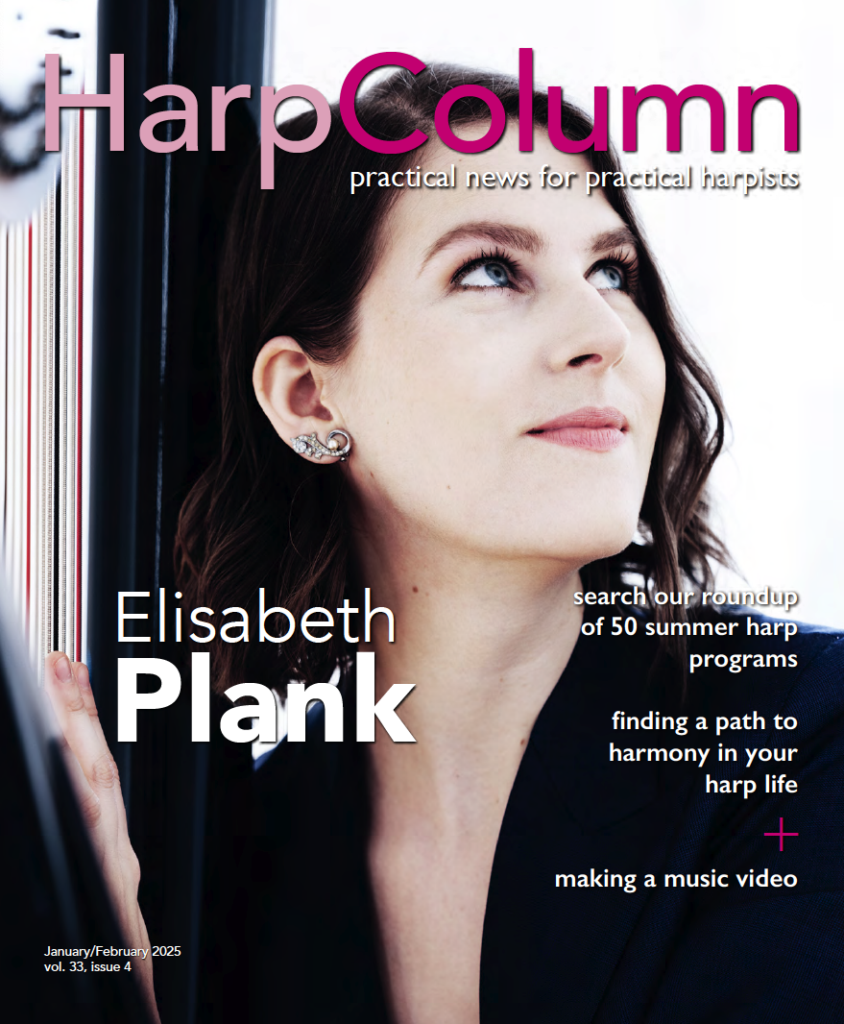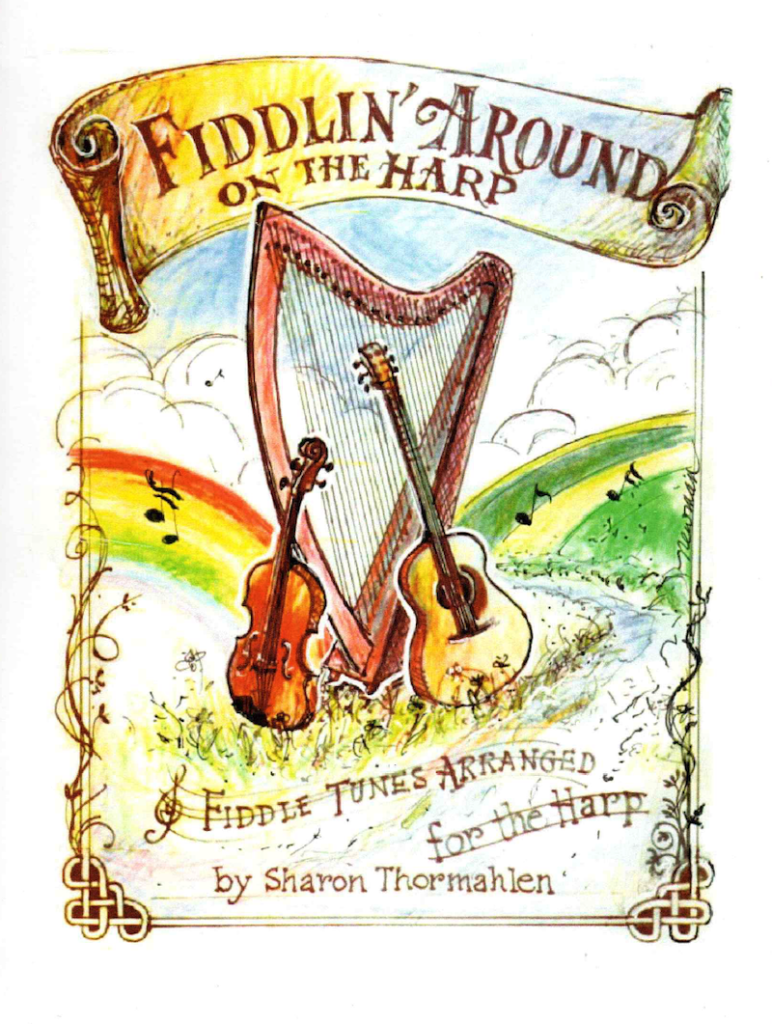
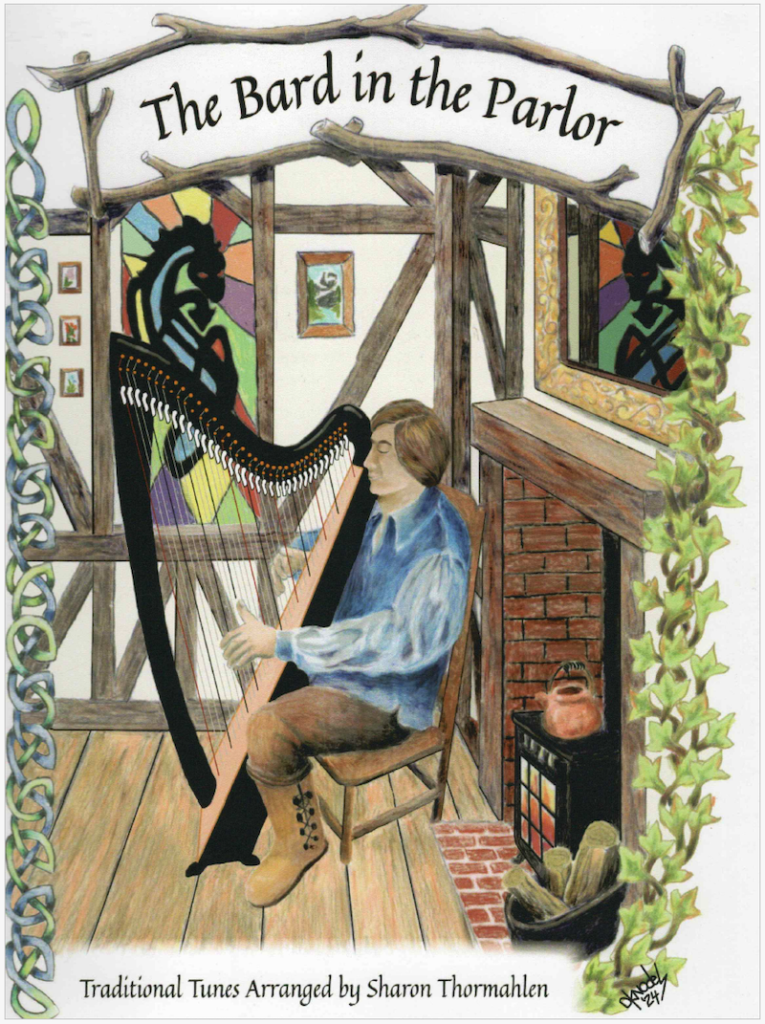
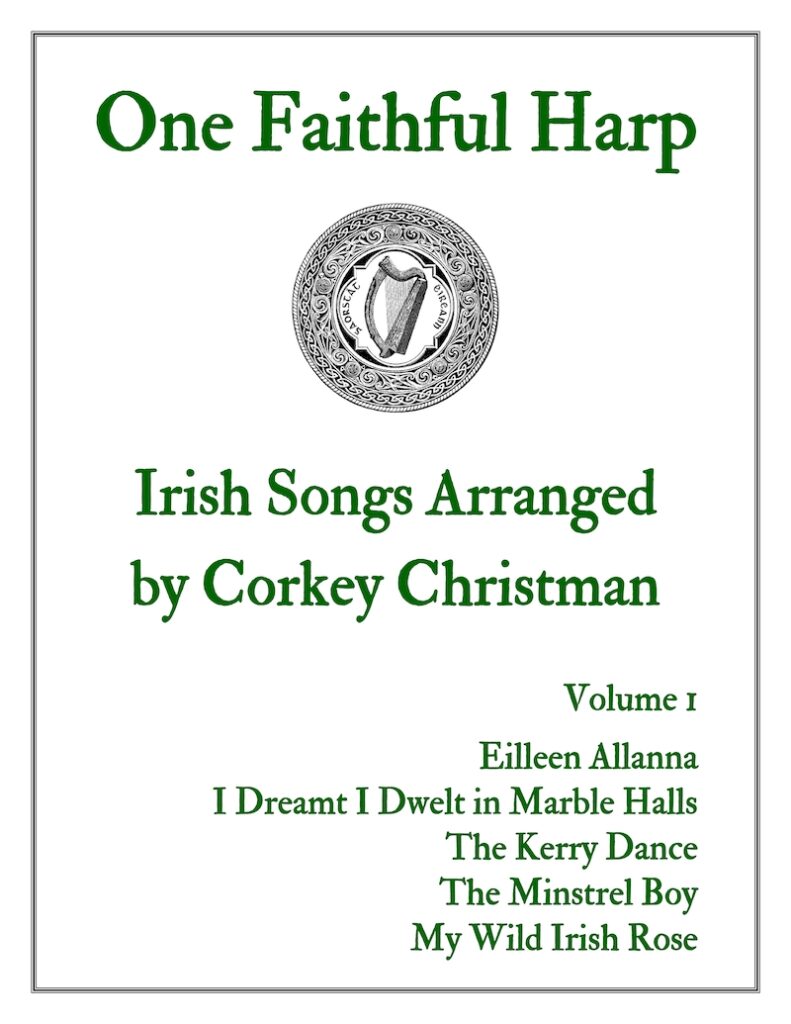
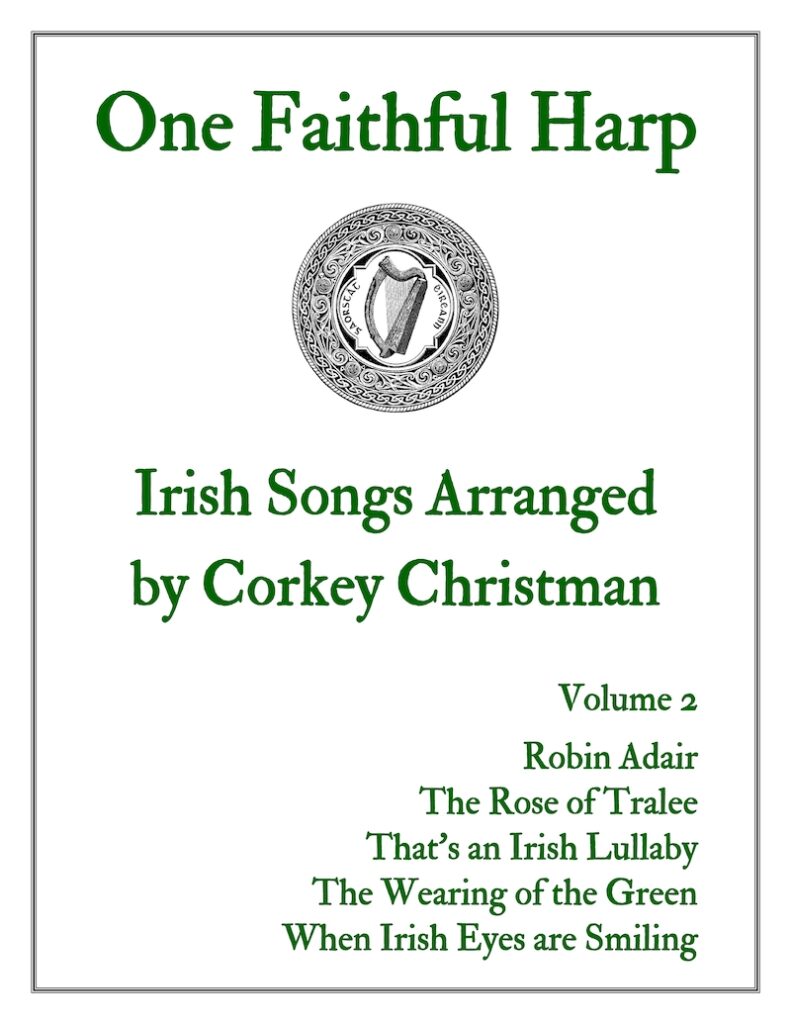
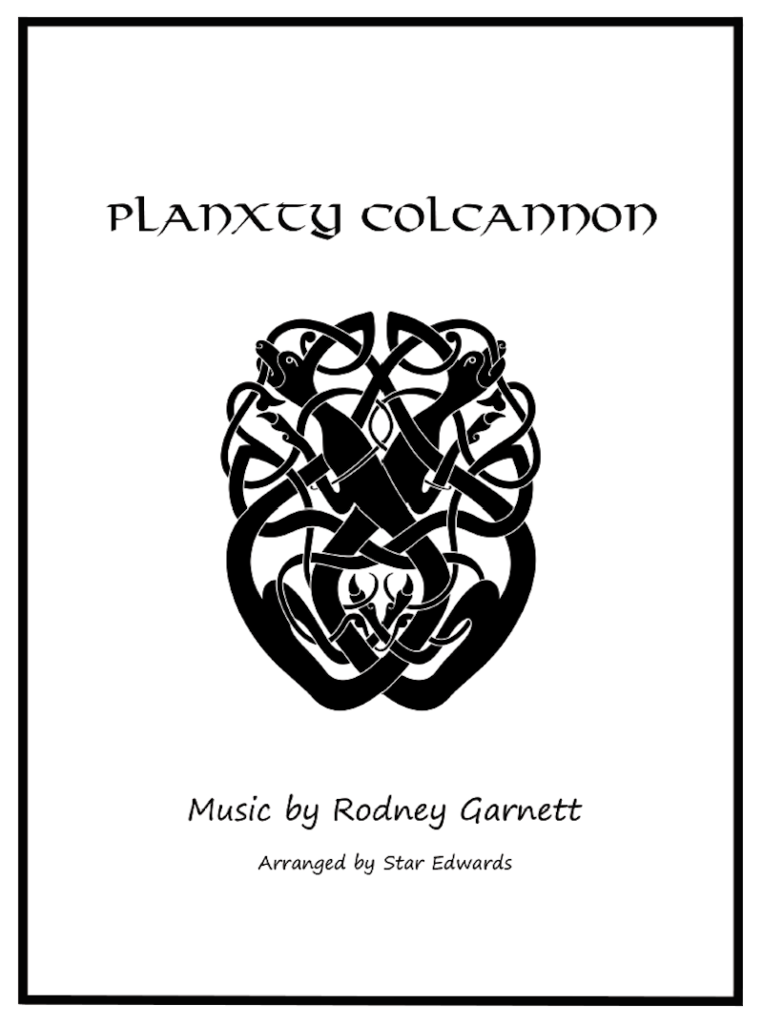
New Irish music for St. Patrick’s Day includes (from l. to r.): two volumes of arrangements by Sharon Thormahlen; two volumes of Irish songs arranged by the late Corkey Christman; and an arrangement of Rodney Garnett’s “Planxty Colcannon” by Star Edwards.
If you have some upcoming gigs for St. Patrick’s Day, there are several recent publications that will provide plenty of repertoire for you.
Afghan Press has published two volumes of arrangements by Sharon Thormahlen that are chock full of useful melodies. Fiddlin’ Around on the Harp is a collection of 18 traditional fiddle tunes arranged for harp plus one of Thormahlen’s original compositions.
It contains standards like “Carolan’s Concerto,” “Foggy Dew,” “Si Bheag Si Mhor,” and “Star of the County Down.” Thormahlen’s original piece is the title tune, “Fiddlin’ Around on the Harp.” The tunes are organized in the order of how many sharps are required. Since no piece requires more than two sharps, a lever harp with levers only on C and F is all that is needed to play all this music.
Nine of the selections include an optional harmony part for a second harp. Since the harmony is often above the melody, the arranger includes a suggestion to play this part a little softer so the melody can be heard. You’ll want a duo partner if possible, because the harmony parts make delightful duets. If you’re playing solo, chord symbols are included on every piece so you can embellish as you see fit. Only one piece, “Sailor’s Hornpipe,” has a lever change. This isn’t a new publication, but it is handy to have for a St. Patty’s gig.
A more recent publication, The Bard in the Parlor, contains 18 tunes by Irish, Scottish, Welsh, English, and German composers of the 17th and 18th centuries. Once again, Thormahlen included her original title piece in addition to these old tunes.
This collection is intended for lever harp although only one piece, “An Ayre” by Jeremiah Clarke, requires a lever change and it is clearly marked. However, there are pre-set levers on several tunes that would require pedal changes on pedal harp. Three tunes, “Miss MacDermott” (O’Carolan), “Garryowen” (a traditional Irish jig), and “King William’s March” (Jeremiah Clarke), include a separate harmony part for another harp. This last piece makes a nice wedding march. Chord symbols are included above the staff throughout the book, and Thormahlen advises in the foreword that she sometimes deviates from the traditional harmonies. No fingering is provided, but the arranger invites email inquiries if you need assistance.
Both these books are spiral bound, and the typesetting is easy to read. Page turns were well-planned, and Thormahlen includes a little background on each piece at the end of each arrangement. Intermediate players can sight-read this music. It is also accessible to advanced beginners. Both of these books would be useful additions to your library.
Bill van Patten has published two volumes of Irish songs arranged by the late Corkey Christman. Each volume of One Faithful Harp contains five tunes arranged for pedal harp. These are not the usual jigs, reels, and airs, van Patten tells us, but instead an assortment of sentimental songs about a romanticized Ireland.
The only piece in Volume 1 that doesn’t have any pedal changes is “My Wild Irish Rose.” It’s also the only tune with a short intro. This could be played on lever harp tuned to at least B-flat if you substitute a fifth-octave B for the sixth-octave B that most lever harps don’t have.
There is one pedal change in “Eilleen Allana” that could be omitted (since it is a harmony note), or managed as a lever change. The other three pieces, “I Dreamt I Dwelt in Marble Halls,” “The Minstrel Boy,” and “Kerry Dance” are definitely for pedal harp. They are all creative and interesting arrangements.
Volume 2 has just one piece, “The Wearing of the Green,” without pedals that can be played on lever harp. It features a dissonant, drone-like accompaniment that suggests bagpipes.
Christman’s talent for arranging sparkles in pieces like “Robin Adair.” He includes four verses, each one slightly different, deftly incorporating triplets in one verse. “That’s an Irish Lullaby” can be a little challenging as the melody switches back and forth between the two hands. It also has an intro and several single and double harmonics. “When Irish Eyes are Smiling” and “The Rose of Tralee” are simpler and sweet.
Both volumes are available on harpcolumnmusic.com, and you can also purchase each tune individually. Lever harp players who are Christman fans can get the three pieces that are playable on lever harp without buying the whole collection.
All pedal changes are notated clearly below the staff. The music is suitable for the intermediate level. Some selections are sight-readable, but others are a little more challenging. They are all nicely developed arrangements and worth a little effort.
Both pedal and lever harp players will enjoy an arrangement of “Planxty Colcannon” arranged by Star Edwards. It was written by Rod Garrett as a tribute to the now disbanded Irish band, Colcannon. Edwards arranged this for her beloved Irish Setter, Finnegan, and played it as he took his last breath. It’s just two pages, and the only difference between the two verses is that there are some chords below the melody and fewer grace notes on the second verse. It’s a simple, reflective tune in the key of G that no doubt provided a peaceful transition for Finnegan.
You can find it on harpcolumnmusic.com. It is sight-readable for an intermediate player, and the typesetting is easy to read. There are no chord symbols or fingering. It’s just a lovely piece to play on St. Patrick’s Day or throughout the year. •






